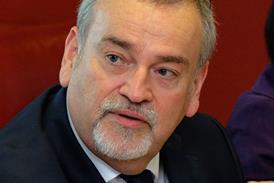How can you create a “ground up” solution to support integrated care and meet local needs – and can this deliver clinical benefits and cost savings? Sean Riddell offers some advice.
Get involved
Do you have an example of how technology is driving integrated care in your area? Would you like to see it published in Resource Centre? Email your case study to hsjresourcecentre@emap.com with the subject line “technology & integration”.
Alternatively, use the comment box below to post your top tips and suggestions.
Delivering locally responsive, patient-centred services is the goal of every NHS organisation – and better information is a vital component of success.
Yet computer projects are often a daunting area – carrying the fear of spiralling costs, upheaval to services and the worry that promised benefits may not materialise.
It does not have to be like this. In 22 years with EMIS, I’ve worked with some of the country’s most forward-thinking trusts – organisations with a passion for improving patient care and efficiency, and with the vision to harness IT to deliver their goals.
Working with NHS organisations in Liverpool, Cumbria, Cheshire and Tower Hamlets has taught me some valuable lessons about how to deliver successful local solutions – and, critically, how to ensure they are adopted and deliver tangible benefits.
Technology can only ever be a means to an end, so it is important that any project begins with a very clear statement of its goal – whether this is better patient care, improved efficiency, or indeed both.
Involving clinicians from the outset is critical; in my experience, the most successful projects begin with clinical needs and are shaped by clinicians’ involvement throughout.
Once you have defined your goal, you need to pin down the benefits you want the project to deliver, and to make these as measurable as possible. Defining the benefits will help you secure support and funding, and provides an essential yardstick to measure success.
Finally, put in place robust governance arrangements to ensure that people are held to account for progress and to measure and track risk.
Common hurdles
Our integrated care system puts the patient at the centre and shares relevant and up-to-date information with the different clinicians involved in their care across organisational boundaries.
Achieving this in a local setting is no simple task, and one of the biggest hurdles is overcoming concerns about how to maintain the security and confidentiality of the patient record (opening up the GP electronic health record for appropriate, consented access by other healthcare professionals is usually an essential step).
The key to overcoming these concerns – as demonstrated by North Mersey Health Informatics Service in its wide-ranging data-sharing project – is to actively engage patients, clinicians and wider stakeholders from the start, informing them of the benefits and listening to their concerns. Robust data-sharing agreements can then be put in place to safeguard patient records.
Another common hurdle is the project’s changing technology requirements; in a fast-moving NHS landscape this is inevitable, and it is important for both client and supplier to retain a flexible approach.
At each stage of the process, ask yourself if the project is adding clinical benefit, or improving the patient’s journey. Review what you have done, learn from it and always keep your end goal in mind.
Integrated care in action
In Liverpool, the North Mersey Health Informatics Service (HIS), which supports services for 750,000 patients, is delivering integrated care on an impressive scale. By joining up IT systems from a number of suppliers, it has redesigned and improved nine clinical pathways: heart failure, urgent care, COPD, children’s services, cancer, diabetes, mental health, dementia and clinical support services.
At the centre of the project is the EMIS Web system, which holds GP records and facilitates secure access by other clinicians. It also allows health professionals to add information to the shared record without affecting the core GP record. In the last year North Mersey has:
- Enabled viewing of more than 55,000 records outside the GP setting – supporting safer consultations by giving clinicians timely access to vital information.
- Increased productivity: community matrons have reduced by 70 per cent the time they spend asking GPs for patient information; acute medical unit pharmacists are seeing 140 more patients a month.
- Enabled more choice for patients about where and when they can be treated.
- Saved £1.5m, with a target to double this by 2013.
Kate Warriner, head of IT commissioning at North Mersey HIS said: “Having a strategic partnership with our suppliers was essential for the success of this project, which is still ongoing.
“Clinical engagement and clinical leadership were other vital elements, as was strong governance throughout the project. We set up formal project board meetings where people were held accountable for progress, and we used a traffic light system to measure risk at every stage.”
The CCG factor
How will the advent of clinical commissioning groups affect the delivery of IT to support integrated care? It’s a tough question to answer when much of the detail is still to be fleshed out. However, it is possible to make some general observations:
- Flexibility will be critical; CCGs will have different requirements. Each will want to reflect and respond to local needs, so successful technology will need to be adaptable. Interoperability (different systems talking to each other) will also be critical if different clinical groups are to share information.
- Size matters; it’s important to get the balance right between localising services and achieving economies of scale. Integrating a range of different services is key – for example GPs, community services, therapies, specialties and child health. Despite the differences in CCG structure, frontline staff will share the same basic requirements: timely, up-to-date information organised in a way that allows them to deliver integrated care.
To ensure your supplier delivers what you want, give them a clear understanding of your healthcare economy and – crucially – give them access to every level of your organisation, from management to end user. I sat on the programme development board for Liverpool PCT, which was invaluable. Ask for tailored solutions – one size never fits all in healthcare – and make sure there is a commitment to continuing support throughout the change progress and beyond.























2 Readers' comments